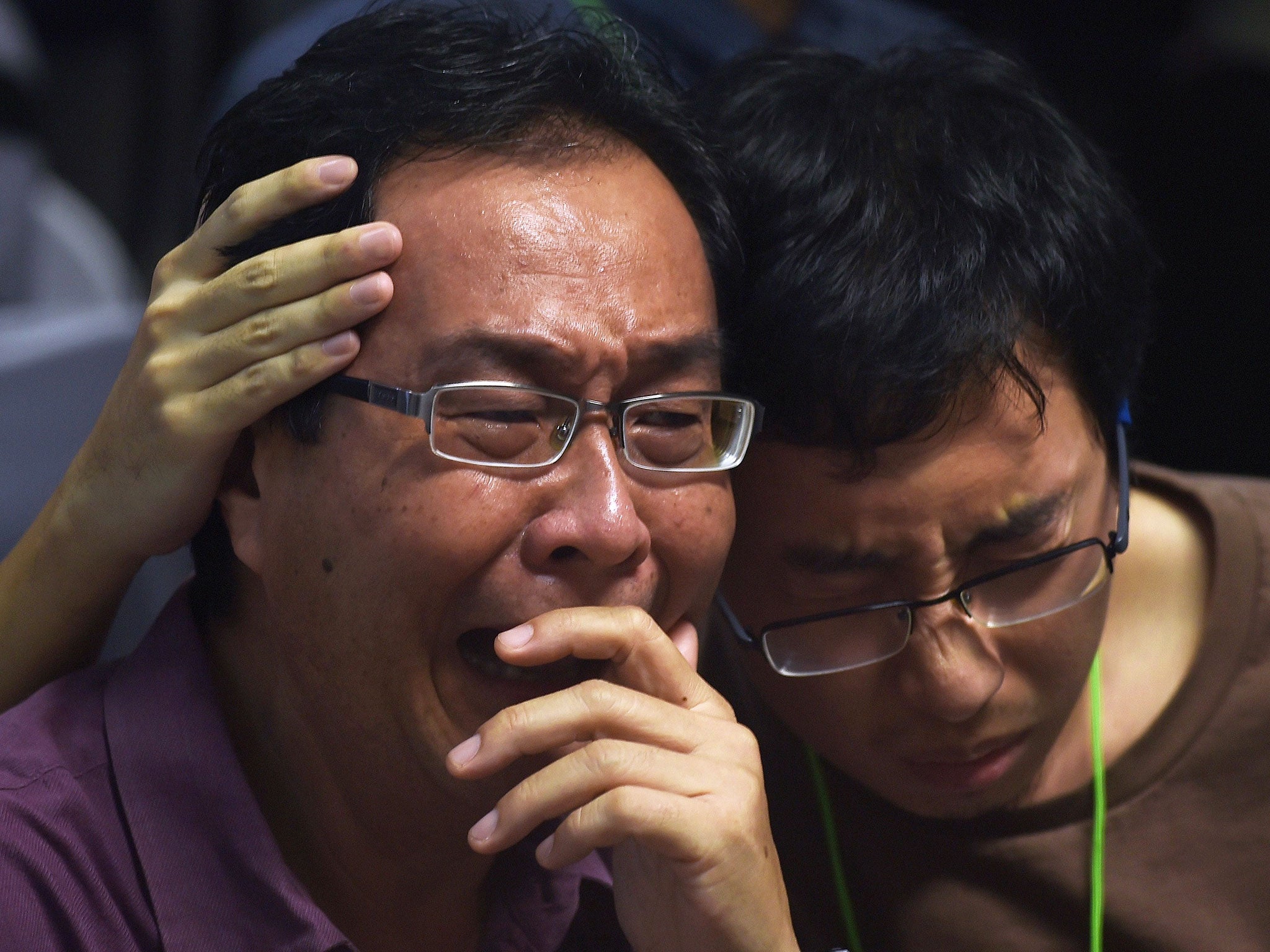AirAsia flight QZ8501 crash: Investigators piecing together the final fatal minutes
Will evidence lend weight to possibility that pilots lost control when they encountered fast-evolving tropical storm?

Your support helps us to tell the story
From reproductive rights to climate change to Big Tech, The Independent is on the ground when the story is developing. Whether it's investigating the financials of Elon Musk's pro-Trump PAC or producing our latest documentary, 'The A Word', which shines a light on the American women fighting for reproductive rights, we know how important it is to parse out the facts from the messaging.
At such a critical moment in US history, we need reporters on the ground. Your donation allows us to keep sending journalists to speak to both sides of the story.
The Independent is trusted by Americans across the entire political spectrum. And unlike many other quality news outlets, we choose not to lock Americans out of our reporting and analysis with paywalls. We believe quality journalism should be available to everyone, paid for by those who can afford it.
Your support makes all the difference.Moments after relatives of the passengers on the crashed AirAsia jet were told that there was no hope for their loved ones, their grief was intensified by television stations showing pictures of bodies in the Java Sea.
The families were gathered at the crisis centre in Surabaya, where the doomed flight QZ8501 began its final flight. They were watching developments on large TV screens at the time. The leading news station, Channel NewsAsia, was showing a live feed from a local Indonesian station, which included images of victims’ bodies.
The channel later tweeted: “We apologise for graphic images on our TV feed that were inadvertently shown.”
Indonesia’s National Search and Rescue Agency found bodies and wreckage about six miles from the plane’s location when contact was lost.
Tony Fernandes, Group Chief Executive Officer of AirAsia added: “I am absolutely devastated. This is a very difficult moment for all of us at AirAsia as we await further developments of the search and rescue operations but our first priority now is the wellbeing of the family members of those onboard QZ8501.”
As victims and debris from the crashed AirAsia jet are recovered from the Java Sea, investigators will start piecing together the final fatal minutes of the flight.
The Airbus A320 jet, with 162 people on board, was flying from Surabaya to Singapore. Air-traffic controllers lost contact with the pilots shortly after dawn, local time, on Sunday.
The condition in which the victims and the debris are found will prove significant in the investigation. The evidence suggests that the aircraft was largely intact when it hit the water, and had not broken up in flight.

A Singapore-based vessel with specialist equipment to detect underwater “pings” from the flight data recorder and cockpit voice recorder is being deployed in the search. The two “black boxes” are designed to provide information on everything from the heading, speed and altitude of the aircraft to the conversation between the captain and first officer - and, indeed, to reveal if both pilots were on the flight deck at the time.
The available evidence is currently limited to communication between the air-traffic control provider AirNav Indonesia and the flight deck, plus evidence from the primary radar.
At 6.12am, local time, the pilot asked for - and was granted - permission to deviate from the normal airway. He then asked to climb from 32,000 feet to 38,000 feet. Air-traffic controllers told the pilot to remain at the same altitude because of other aircraft in the area, and in order to coordinate with the adjacent airspace, controlled by Singapore.
Two minutes later, air-traffic control approved a climb to 34,000 feet but received no response from the pilot. No emergency call was made.
The Airbus was still on the radar at 6.16am. What is said to be a leaked screen grab that has widely circulated on Twitter indicates the jet was at a height (36,300 feet) and ground speed (406mph) that suggests extreme distress and the likelihood of a fatal stall. Should it prove to be genuine, it will lend weight to the possibility that the pilots lost control of the aircraft when they encountered a fast-evolving tropical storm.
Join our commenting forum
Join thought-provoking conversations, follow other Independent readers and see their replies
Comments